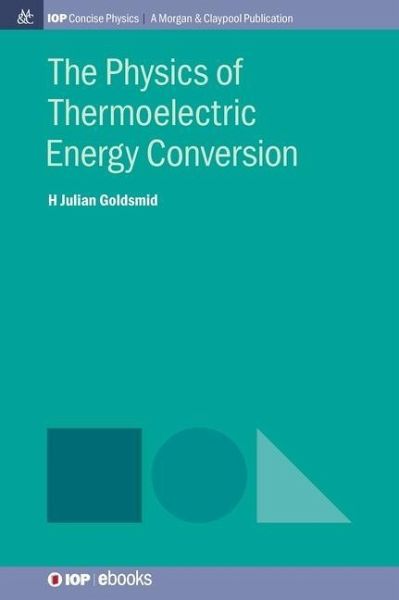
The Physics of Thermoelectric Energy Conversion
Versandkostenfrei!
Versandfertig in über 4 Wochen
113,99 €
inkl. MwSt.
Weitere Ausgaben:

PAYBACK Punkte
57 °P sammeln!
This book outlines the principles of thermoelectric generation and refrigeration from the discovery of the Seebeck and Peltier effects in the nineteenth century through the introduction of semiconductor thermoelements in the mid-twentieth century to the more recent development of nanostructured materials. It is shown that the efficiency of a thermoelectric generator and the coefficient of performance of a thermoelectric refrigerator can be related to a quantity known as the figure of merit. The figure of merit depends on the Seebeck coefficient and the ratio of the electrical to thermal conduc...
This book outlines the principles of thermoelectric generation and refrigeration from the discovery of the Seebeck and Peltier effects in the nineteenth century through the introduction of semiconductor thermoelements in the mid-twentieth century to the more recent development of nanostructured materials. It is shown that the efficiency of a thermoelectric generator and the coefficient of performance of a thermoelectric refrigerator can be related to a quantity known as the figure of merit. The figure of merit depends on the Seebeck coefficient and the ratio of the electrical to thermal conductivity. It is shown that expressions for these parameters can be derived from the band theory of solids. The conditions for favourable electronic properties are discussed. The methods for selecting materials with a low lattice thermal conductivity are outlined and the ways in which the scattering of phonons can be enhanced are described. The application of these principles is demonstrated for specific materials including the bismuth telluride alloys, bismuth antimony, alloys based on lead telluride, silicon-germanium and materials described as phonon-glass electron-crystals. It is shown that there can be advantages in using the less familiar transverse thermoelectric effects and the transverse thermomagnetic effects. Finally, practical aspects of thermoelectric generation and refrigeration are discussed. The book is aimed at readers who do not have a specialised knowledge of solid state physics.


